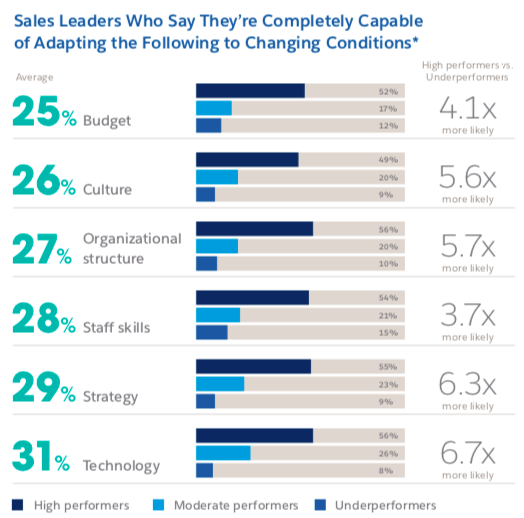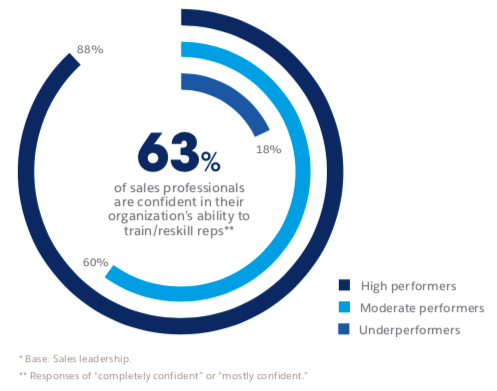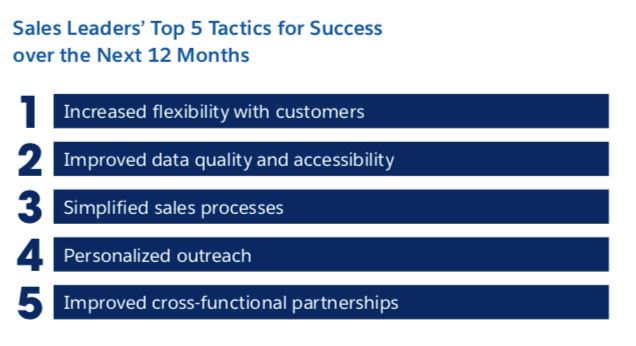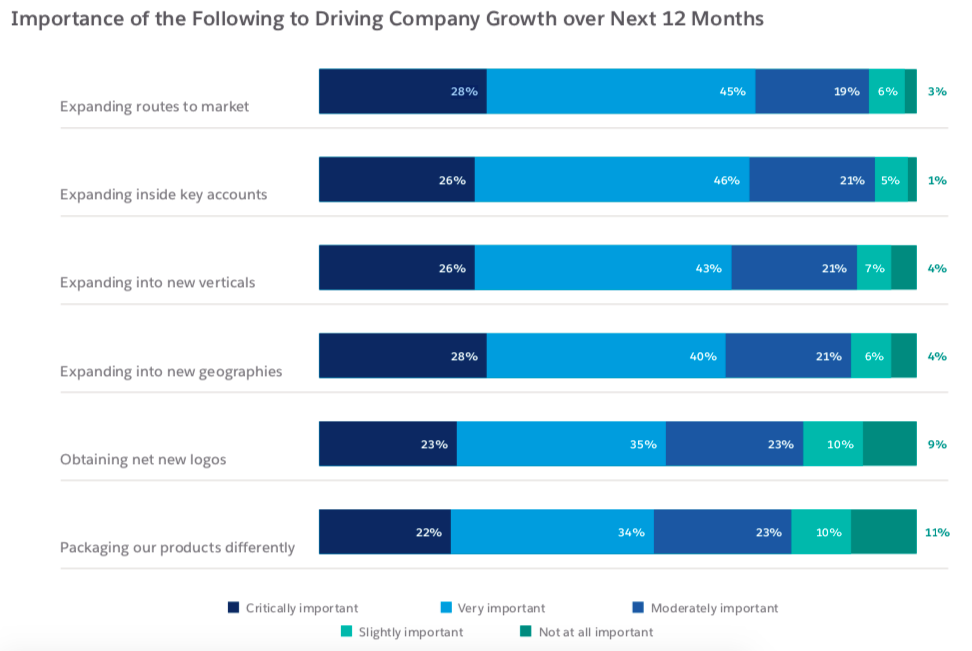Growth strategies are changing. The business landscape is in constant flux, new challenges are arising daily, and last year’s sales report can be safely put aside. Today, growth strategies in sales need to be flexible, forward-looking, and customer-centric. And most of all, they need to be data-driven.
To find out how today’s leaders are coming up with successful growth strategies in sales, Salesforce surveyed over 6,000 sales professionals from around the world. The results are detailed in the State of Sales 4th edition. Let’s dig into some of the most notable numbers from the report.
Sales leaders reassess their growth strategies
The pandemic took everyone by surprise, and the fallout has dramatically reshaped the sales landscape. Businesses that had already undergone digital transformation were in a better position to pivot and face new challenges. But could anyone truly say they were prepared?
According to our report, only 25% of sales leaders feel that they’re completely capable of adapting their budget to changing conditions. Furthermore, only 29% feel capable of adapting their strategy.
It’s not surprising that high-performing sales leaders have much more confidence in their ability to adapt than underperformers. The size of the confidence gap is also notable. A full 6.7 times more high performers feel comfortable in their ability to adapt their technology to changing circumstances.
The fact that technological supremacy may further widen the gap between high performers and underperformers should definitely concern those in the latter category.
The importance of growth strategies in sales
Sales teams should always be looking for new growth strategies and techniques for keeping up with their competition. In times of dramatic change, focusing on sales growth strategies is especially important. It’s easy to curl up in a ball and try to minimise risk. But high performers transform their growth strategies, introduce new solutions, and go bigger.
As consumers’ needs and priorities change, so should growth strategies in sales. The first priority of many growth strategies will be to rapidly recover lost revenue. The next should be to accelerate the things you do well, and attack the ‘second horizon’.
Sales leaders reassess their organisation’s needs
There’s a good chance that new growth strategies will require different tactics and skills, so sales leaders need to fine-tune their teams to face change. Upskilling and re-skilling employees is a great way to keep the workforce agile, especially in an era of new practices and safety regulations. As our report shows, 64% of reps say that they’ve had to take on new responsibilities and 58% expect their role to change permanently.
This change may already be underway. In fact, 70% of organisations have retrained their field reps to use new technologies and strategies to sell from home. This transition from external sales to virtual-based selling is more than a temporary blip; the future of work looks to be increasingly decentralised. In light of this, skilling up the workforce is becoming more important.
Once again we see a huge difference in confidence between high performers and underperformers. And once again, it’s a difference that threatens to increase the divide between the haves and have-nots. If training and re-skilling are keys to navigating the current climate, and only 18% of underperformers have confidence in their ability to do so, how can they make up ground on more successful sales teams?
Flexibility and digital transformation are leading the way
The best way to approach uncertainty is to remain flexible. This is why agility has become such a priority in the new climate. And the best way for underperforming sales teams to turn into high-performing ones is through digital transformation.
Digital solutions enable sales professionals to better meet the needs of their customers, and to leverage data to transform their growth strategies. In a world where the sales gap seems to be growing bigger and bigger, digitalisation is the great equaliser. In fact, when we take a look at how sales leaders view the next 12 months, every one of their goals could be achieved or improved upon by leveraging digital solutions.
There’s no doubt about it; the digital imperative is here. Creating growth strategies for sales will help businesses prepare blueprints for the New Normal.
The new climate requires different tools and growth strategies, and what worked previously might not anymore. In today’s world, sympathy is crucial, speed is expected and agility is key. When we take a look at what consumers want from salespeople, securing the best prices still tops the list. Surprisingly, the ability to be empathetic has risen to number two.
Most important qualities of a salesperson
When asked ‘What are the most important qualities of a salesperson at this time?’ consumers answered:
Low prices
Empathy
Product expertise
Flexibility
Speed
Being proactive
Product selection
Many of these answers are expected, but it’s interesting to note just how non-negotiable empathy has become. It can be easy for sales professionals to forget that many of their customers might be struggling with financial uncertainty or personal issues. Now more than ever these customers need a salesperson to function as an advisor, an anchor, and an ally.
Overcoming crisis: driving strategic growth in the New Normal
The most successful businesses will be the ones who turn challenges into opportunities. Creating growth strategies will help boost sales growth, but companies also need the right technologies. Our report shows that 77% of sales leaders say that they’ve accelerated digital transformation since 2019.
However, only 31% say that they’re completely confident in their abilities to adapt their technology to changing conditions. Many of these leaders are still not where they need to be, so building technological agility should be a priority.
When we look at how sales leaders plan to succeed over the next 12 months, it’s clear that digitalisation could help them across the board.
Creative, data-driven growth strategies will set the bar for the New Normal, while digital solutions will empower businesses to be more agile and innovative. At the centre of it all is the customer, who will benefit from increased efficiency, personalised service, and anytime, anywhere engagement.
New era, new tactics
Sales reps are all dealing with the uncertain landscape in different ways – some more successfully than others. Challenging conditions and changing consumer behaviour have affected productivity, with nearly half of reps (46% of outside reps and 49% of inside reps) saying that they’re less productive than they used to be.
Much of this might be down to organisational problems with training and upskilling. The majority of reps (64%) say that they’ve had to take on new job responsibilities, and 58% expect their role to change permanently. Despite this, only 63% of sales professionals are confident in their organisation’s ability to train/reskill reps.
Top growth strategies over the next 12 months
We’ll leave you with one last bit of actionable information gleaned from the minds of 6,000 sales professionals around the world. Here are their top 6 growth strategies for sales over the twelve months:
Create your growth strategy today
Times are changing, and businesses need to change too. Now’s the time to start thinking about new growth strategies and digital solutions. With the right tools, strategies, and skills, underperforming teams can become high-performing teams in the blink of an eye.
To read more insights into how sales professionals are creating sales growth strategies, check out the State of Sales 4th Edition.








